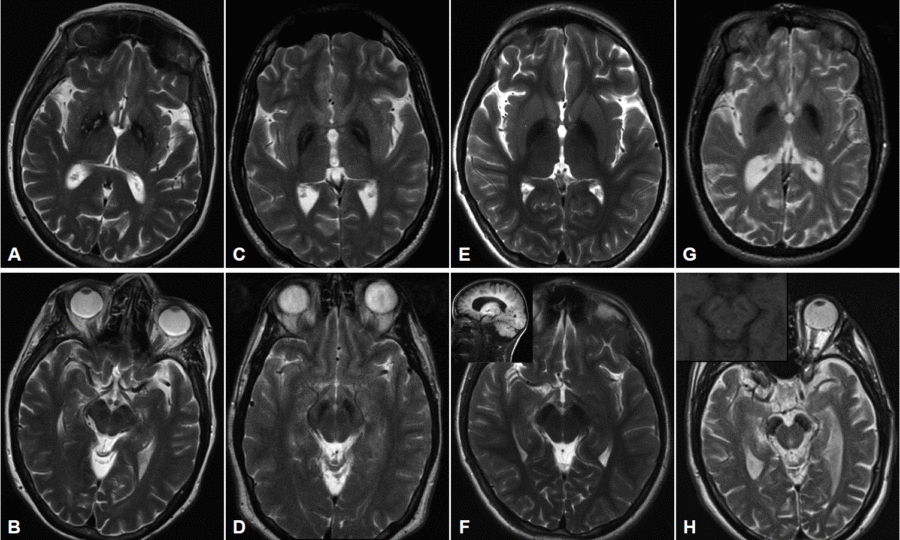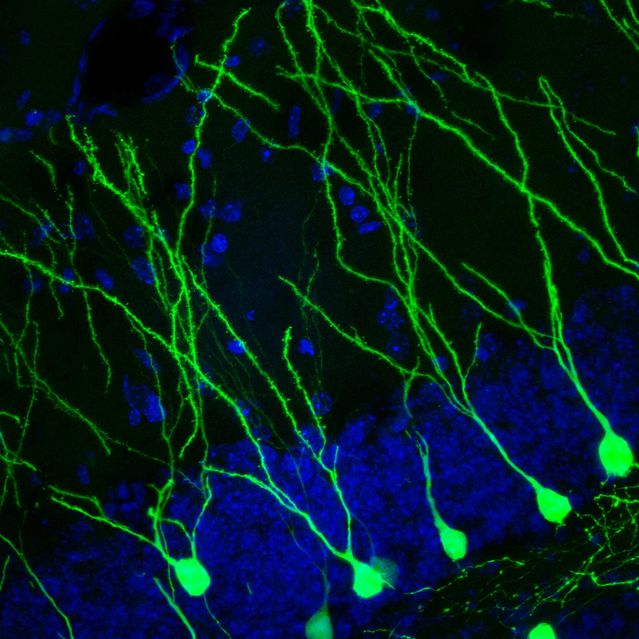Artificial Intelligence (A.I.) is a wide umbrella of emerging technologies which have the potential to completely transform business and society. Key components include:
- Advanced analytics, which support decision making through predictions and analyses.
- Computer vision, which understands unstructured data like documents, images, videos or biometrics.
- Intelligent dialogue, which involves language interactions with humans though voice and chat.
- Robotic Process Automation, which automates rules-based, repetitive, high volume processes.
- Cognitive agents, autonomous smart workers, able to interact, execute, analyze and learn.
In its immense complexity, artificial intelligence is like human intelligence. Effective analytics teams in business interact in the same way as our nervous system does to enable human intelligence:
- Analytics Organization: data professionals are like neurons in our brain, which organise cognitive and analytical functions akin to an analytics organizational chart. Leaders need to understand analytics roles, hiring and retention techniques, organizational models and the role of the Chief Data Officer
- Data-driven culture: culture is like the reptilian brain, the oldest part of our brain, whose primary role is reflexresponses, not rational thinking. Relevant topics include building data-centric culture, managing cultural clash, managing people and robots, as well as data ethics.
- Analytics Strategy is like the neo-cortex, the part of our brain which allows us to develop complex thoughts. Leaders need to define a use case-driven analytics and A.I. roadmap and get buy-in for it.
- Analytics Execution is like an agile human nervous system which reaches all parts of the body. Relevant topics are managing an experimental project portfolio, agile methodology, metrics and governance.
Successfully managing a team through an analytics and artificial intelligence transformation requires skills and philosophies different from managing other groups of talented professionals. It is wise to be aware of potential trade-offs when it comes to defining the right organization, culture, strategy and execution.
This is the first article of a series of four and focuses on organizing analytics like the human brain.
Analytics requires multidisciplinary talent
Neurons exist in different shapes and sizes and can be classified by their morphology and function: sensory neurons get data from senses, inside the brain multiples kinds of neurons allow us to extract insights to make decisions, and motor neurons move muscles based on those decisions. Roles in an analytics team are exactly the same:
Data engineers are sensory neurons which extract and assemble data from different sources, transform and clean it, and then load it in a storage in a format that can be analysed. Complex organizations also require data architects to define how the data will be stored, consumed, integrated and managed by different data entities, IT systems and applications.
Data scientists are brain neurons which design, build and test advanced predictive models with that data, based on machine learning algorithms.
Additionally, Analytics consultants, also called translators, are motor neurons which bridge the technical expertise of data engineers / scientists with the business know-how of domain experts in functional areas such as marketing, and operations to ensure that insights generated through sophisticated analytics translate into impact at scale. Domain experts identify and sharpen the project assignment, provide detailed knowledge of business processes, help to identify and to understand relevant data and define how results should be evaluated.
Some organisations additionally employ full-stack developers who automate data processes, and graphic designers who outline the right interfaces or customer journeys for data users.
Business intelligence (BI) professionals build basic descriptive reports but are not really involved in analysing them. Therefore they are not technically part of the analytics team, which is often build as an appendix of BI.
Hiring scarce analytical talent
Neurogenesis is the process by which neurons are produced. Neurogenesis is most active during embryonic development and largely ceases during adulthood in most areas of the brain. New neurons are difficult to produce. Similarly, data professionals are difficult to hire, because they are scarce, particularly in emerging markets.
Promising data-minded individuals are easy to spot from the distance: curious detailed-oriented thinkers, energized by uncertainty, open to opposed opinions and willing work in team iteratively to produce insightful recommendations, but still with feet on the ground.
The analytics job market is nascent and employers compete fiercely for the best people. Sadly, salary benchmarks are unavailable or do not reflect the market since the common practice is not to pay a benchmark but to just give a rise. Simply paying a premium to staff an in-house analytics team is typically not sustainable. What creates sustainability is a combination of things:
Neurogenesis, creation of neurons
Improving brand recognition is of paramount importance since data scientist are selective about their employers. One way of doing this is organizing recruiting hackathon (design sprint-like events, where participants of diverse backgrounds collaborate intensively over a weekend on a data-science project and winners get a job offer). Another way is releasing anonymized data to create an online data science competitions (such as Kaggle.com.)
A few strategic hires, generally more senior people to help lead an analytics group, can also attract more talent. In some cases, strategic partnerships with, or even acquisitions of, small data-analytics service firms can also help boost capabilities, but need to be integrated properly in the organization.
But probably the most effective technique, although lengthy, is to develop talent internally. Profiles with quantitative backgrounds (e.g. BI, IT developers, and engineers) and young graduates from technical degrees can be easily converted into data scientists and data engineers.
Retaining and nurturing analytical talent
Neurodegeneration is the progressive loss of neurons. Neurodegenerative diseases such as Parkinson’s, Alzheimer’s and Huntington’s are incurable. Similarly, employee churn in data analytics teams is very difficult to salvage. Therefore, it needs to carefully be avoided.
Employee turn-over among data professionals can be very high, with tenures often below 1 year; this can seriously hinder the big data analytics aspirations of employers.
Capability development is required to retain curious analytical talent. Creating a training program for data science and engineering is the first step. Online curriculums such as Coursera, Udemy or Udacity are becoming popular because they are an inexpensive way of providing exceptional quality training for beginner or intermediate students. They cover most aspects of data science (from programming and advanced statistics to visualization) and data engineering (from structured and unstructured databases to distributed computing systems). However, advanced professionals might require face-to-face and vendor-specific trainings.
Additionally, these online curriculums offer a certification for every course and their corporate plans allow students to take unlimited courses. However, it might be difficult to assure a high completion rate. This is why companies are increasingly hiring in-house trainers, sometimes from the academia, who complement the online offerings and make sure students complete the courses.

Neurodegeneration with brain iron accumulation
It is also paramount to institutionalize a career path for data professionals. Meaningful work and career opportunities are critical for engaging and retaining all types of employees, and analysts are no exception. A proper career path should have several tracks (e.g. data science, data engineer, analytics consultant) with 3-5 steps in each track and clear transitions between the tracks as well as to other professional tracks such as marketing, operations or general management.
Promotion to a higher rank and transition criteria might include obtaining certain certifications, participating in projects of another track (e.g. a data scientist working as a consultant), demonstrating certain skills, participating in an international assignment, becoming an expert in a particular area or having a minimum tenure in the role. For example, a typical career path could look like this:
- Data Science track: data analyst >> data scientist, senior data scientist >> principal data scientist >> chief data scientis
- Data engineering track: data engineer / architect >> senior data engineer / architect >> principal data engineer / architect
- Consulting track: business consultant >> project leader >> consulting principal
Innovative remuneration approaches can also help to retain data scientists. For example, skillset allowances upon achieving a particular certification and progressive bonuses upon reaching key milestones, such as succeeding the probation period of 1 or 2 years. Longer term incentives are usually less effective for young analytical millennials.
Additionally, data professionals pride themselves in their uniqueness and look for a sense of fit with their employers. They want to work for companies that value analytics and with colleagues that appreciate and respect their unique talents. Therefore data-driven companies define company values and cultures which ignite passion, such as Unrivalled Environment for Exceptional People (McKinsey) or Every Day is Day One (Amazon).
Last but not least, sense of purpose is key for long term retention. Without being able to make a real impact on the organization’s success, data professionals will not find enough meaning in their work, and so they will be less engaged and less likely to stay. For many of them, having to spend too much time on simple analyses and report generation quickly shrinks their motivation. How companies organize analytical talent affects whether they have access to the most meaningful opportunities.
Designing the right organizational model
Primitive worms that appeared 500 million years ago had an especially large ganglion at the front, called the brain. The brain is small and simple in some species. Some types of worms, such as leeches, also have an enlarged ganglion at the back end of the nerve cord, known as a “tail brain”. Some primitive animals like sea stars lack a recognizable brain. In other species, including vertebrates, the brain is the most complex organ in the body.
Similarly to brain evolution, organizational designs for analytics vary in their degree of centralization because analytics requires a balance between centralized learning and distributed execution.
- Centralized learning is required by the nature of machine learning. Machine learning algorithms become more efficient as the amount and variety of data increase. For instance, self-driving cars drive autonomously, but they transmit data to a central data centre to foster central-system learning. Similarly, in larger or data-intensive companies, it is advisable to build internal data science know-how.
- Distributed execution is essential to make the analytics department a decision factory, not a number crunching factory. Business Intelligence departments operate as number crunching factories that export and aggregate data for internal clients. But analytics teams have to go the extra mile to provide actionable recommendations and semi-digested decisions based on predictive modelling. Since decisions in a mature organization are inevitably made in a teamwork environment, the analytics organization must also operate in a distributed way in order to be relevant.

Leeches have a distributed brain system
A centralized enterprise-wide analytics department can set the analytics direction, deploy analytics strategically, coordinate initiatives for the whole organization and is effective sharing best practices and training. However, it might struggle to build relationships with the business.
A variation of a centralized model, with stronger relations with the business unit is a consulting approach whereby all data professionals are centralized but get dynamically staffed into projects in the business units. This approach is also effective sharing best practices and training.
Some organizations set their analytics team is inside a functional area, for example marketing, or have a completely decentralized approach where each function or business unit has a small analytics squad. These two approaches are less effective to run a company-wide program strategically but can be faster, more agile and better aligned with the business needs.
Alternatively, analytics teams can also be decentralized in business units or functions while being all members of a Centre of Excellence. This hybrid approach is a good balance between coordinating enterprise-wide analytics initiatives, deploying analytics strategically, building relations and sharing best practices and learnings. Due to the required centralization – decentralization balance, hybrid approaches are becoming more widespread.
Sub-teams inside each one of these models, particularly centralized models and Centres of Excellence increasing operate as agile scrum teams, which are multidisciplinary project squads including data scientists, data engineers, consultants and designers. According to the agile methodology, scrum members are organized in a matrix composed by Tribes as columns and Chapters as rows:
- Tribes are groups of scrums working in the same functional area such as marketing analytics, digital analytics or operations analytics.
- Chapters are groups of people from different scrums and tribes who share a technical expertise, e.g. data science, data engineering, or consulting.
The reporting line is also key. Companies leading in analytics report at the very top of their organizations (CEO, COO, CFO, CMO or Chief Data Officers) while laggards more often find their analytics leaders in the IT leadership position or their business lines.
Handing analytics to IT has been a problem in many organizations. While it can be an advantage for technical operationalization, IT is often not regarded as a driver of innovative agile solutions. This can hinder the dialogue with the line of business and reduce visibility of analytics teams.
Coming back to sense of purpose, the organizational model greatly determines the degree of meaningful opportunities data professionals will have access to. Centres of Excellence and centralized units are more likely to provide significant work to their members, to offer them more insight into their company’s business, to communicate the value they place on analytics and to make analysts feel “at home”.
Analysts who are organized as internal consultants, housed in functional units, or dispersed throughout the business are more likely to be stuck working on peripheral projects without an enterprise perspective and often feel like misfits, isolated from the business and other analysts.
The case for the Chief Data Officer
The left human brain is more verbal, analytical, and orderly than the right brain. The right brain is more visual and intuitive and has a more creative and less organized way of thinking. An analytics transformation needs both. The left brain is the Chief Data Officer (CDO) and the right brain is typically, but not always, some business line leaders.
Once companies have a Chief Data Officer, the organizational discussion is no longer about (de)centralization of the analytics team but about elevation of the Chief Data Officer.
A Chief Data Officer is responsible for enterprise wide governance and utilization of information as an asset, via data processing, analysis, data mining, information trading. While the role has emerged as a de facto industry standard and gained broad acceptance, there appears to be a profound lack of consensus on the role.
- For example, many companies identify otherC-Levels as the point person, or claim no single point of accountability for data and analytics.
- There is lack of clarity about whether the primary responsibility of the CDO should be to strategize, coordinate, or implement data and analytics initiatives or even to ensure regulatory compliance and governance or to build new sources of revenue. The mandate of the CDO can be expected to evolve as his firm progresses on its data journey.
- While more companies agree that the CDO should report to the steering committee, some think she does not require a seat in it.
- Companies are also sharply divided on whether the CDO should be an externalchange agent who brings fresh perspectives, or an internal veteran who can get things done within the organization.
- Finally, there is also divergence on whether the CDO should be a highly technical Chief Data Scientist or a cross-functional business-driven but still data-conversant leader. Some larger organizations have both profiles with a highly technical Chief Data Scientist reporting to a data-conversant Chief Data Officer
This lack of consensus even within the same company highlights the challenges that CDOs face within. The CDO may be the toughest job in the C-suite within many organizations. The position has become a hot seat with high turnover in a number of firms. As a result, it is paramount for a CDO to clarify his mandate in the early days to clarify his role.
About the author
Pedro URIA RECIO is thought-leader in artificial intelligence, data analytics and digital marketing. His career has encompassed building, leading and mentoring diverse high-performing teams, the development of marketing and analytics strategy, commercial leadership with P&L ownership, leadership of transformational programs and management consulting.
References
- “Why so many data scientists are leaving their jobs”, April 2018, Jonny Brooks-Bartlett.
- “Building an analytics team for your organization”, November 2014, Emilie Harrington
- “You Don’t Have to Be a Data Scientist to Fill This Must-Have Analytics Role”, February 2018, Nicolaus Henke, Jordan Levine and Paul McInerney, HBR
- “Making data analytics work for you—instead of the other way around”, October 2016, Helen Mayhew, Tamim Saleh and Simon Williams, McKinsey
- “The big data trinity: Creating an analytics system to support a learning culture”, May 2015, Matt Ariker, Nimal Manuel and Marc Singer, McKinsey
- “Building an Analytics-Based Organization”, 2014, AT Kearney
- “The Chief Data Officer Dilemma”, Jan 2018, Randy Bean, Forbes
- “The ‘data-driven’ chief data officer: 7 steps to success” April 2018, Benjamin Roussey
- “Why Managing Data Scientists Is Different”, August 2015, Roger M. Stein, MIT Sloan Management Review
- “The Secrets to Managing Business Analytics Projects”, September 2011, Stijn Viaene and Annabel Bunder, MIT Sloan Management Review
- “Agile Team Organisation: Squads, Chapters, Tribes and Guilds”, Ashley-Christian Hardy, Feb 2016
Image credit
Human Brain Project, Neurogenesis by H. van Praag and L. Kitabayash, Leeches.com, Journal of movement disorders

